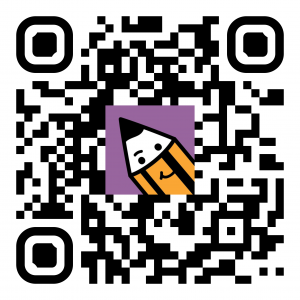

Why use Assistive Apps?
Several schools have early intervention programs to support children with Dyslexia. They use research-based multisensory instruction techniques to help children with focus. Even as the children receive such targeted help, it is important to supplement school programs with adequate assistance at home. This is where an app such as MDA Avaz Reader comes into play. Assistive apps are handy tools that give children with dyslexia access to reading support at home, so that they can keep up with their peers.
In the U.S and U.K, schools have specialized instruction programs for children with dyslexia. But for children in less developed parts of the world, reading intervention programs can be sparse or non-existent. Without proper support, children with dyslexia can be labelled ‘slow, ‘lazy’, and ‘stupid’ which can result in them suffering from low self-esteem. Some may even drop out of school due to their dismal academic performance caused by their reading challenges. Assistive apps can enable such children to perform well in school by helping them read and comprehend written text better.
Adults with Dyslexia too can face problems in the workplace due to their reading difficulties. They can have trouble reading and comprehending documents, spreadsheets,and graphs. Assistive apps can help them manage their difficulties, so that their work efficiency is not compromised.
Reading Challenges Faced by People with Dyslexia
People with Dyslexia can struggle with several aspects of reading. Here is a look at some of their reading challenges:
- Phonemic Awareness
It is the awareness of individual sounds and the way these sounds are blended to make words. People with Dyslexia can have trouble manipulating the sounds in language.
- Phonics
Phonics involves understanding the correlation between individual sounds and the corresponding letters. People with Dyslexia have difficulty identifying the relationship between sounds and letters that represent the sounds.
- Fluency
Fluency is the ability to decode text rapidly and accurately read with appropriate expression. People with Dyslexia can have issues with all three components of fluency – they can read slowly, make errors while reading, or read with the wrong expression.
- Vocabulary
Vocabulary refers to the collection of words whose meaning and appropriate usage is understood. People with Dyslexia can have limited vocabulary, and may need instruction methods that help them learn new words and their meanings.
- Comprehension
Comprehension is the ability to understand the meaning of the written text you read. It is seen as a major factor that influences fluency and vocabulary development.
How can Assistive Apps Help?
Apps such as MDA Avaz Reader use evidence-based methods to enable children to learn at grade level, even when their reading, spelling, and comprehension may be below grade level. MDA Avaz Reader is available in Android and iOS.
![]()
![]()
- Reading Out Written Text
It has been found that most people with dyslexia retain information better when they are read to. Apps that read out written text, allow children to read without the assistance of a parent or teacher. This increases their independence in reading and also boosts their self-confidence.
- Improving Focus
Children with Dyslexia can find reading books intimidating. They can struggle to focus when they are given large chunks of text to read. Apps that highlight a single line or single word at a time, allow them to focus on that particular part of text. Different color overlays can also be used to reduce vision sensitivity. Finger-reading technique can guide the user by marking words that are already read, and pointing to the next word to read.
- Getting Rid of Distractions
People with Dyslexia can be overwhelmed when there is a lot going on in a given page. Removing distractions such as background images helps avoid overstimulation and improves visual focus.
- Reading Hints
It may take longer for people with dyslexia to finish reading a page because they may not be good at identifying sight words. They may also struggle to sound out words. By getting syllable-based and word family hints, they can learn how to identify phonemes in the words. Audio clips that teach pronunciation can also help them read the text with accuracy.
- Building Comprehension
Instead of reading an entire sentence without fully understanding its meaning, assistive apps allow you to build up a sentence by focusing on key parts of the text. This promotes comprehension by ensuring that readers don’t miss out on important details of the text.
Books are reservoirs of knowledge and reading challenges can limit the exposure of children to a wide range of books. Assistive apps can help people with dyslexia discover the joy of reading books. They also provide the necessary support, and prevent reading difficulties from negatively impacting the career prospects or the academic progress of those with dyslexia.
Experience the benefits of assitive technology for dyslexia. Try MDA Avaz Reader now!!!
